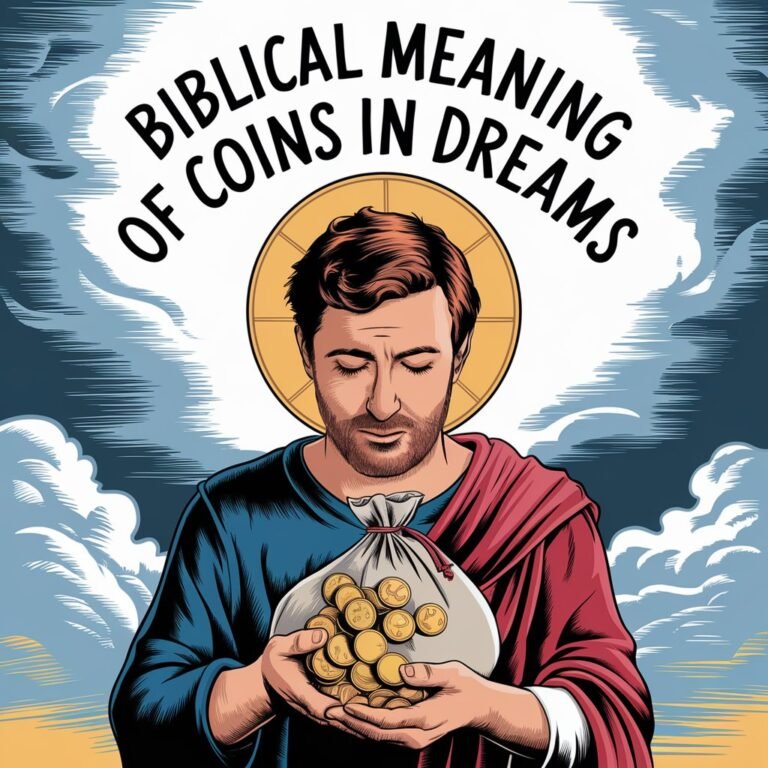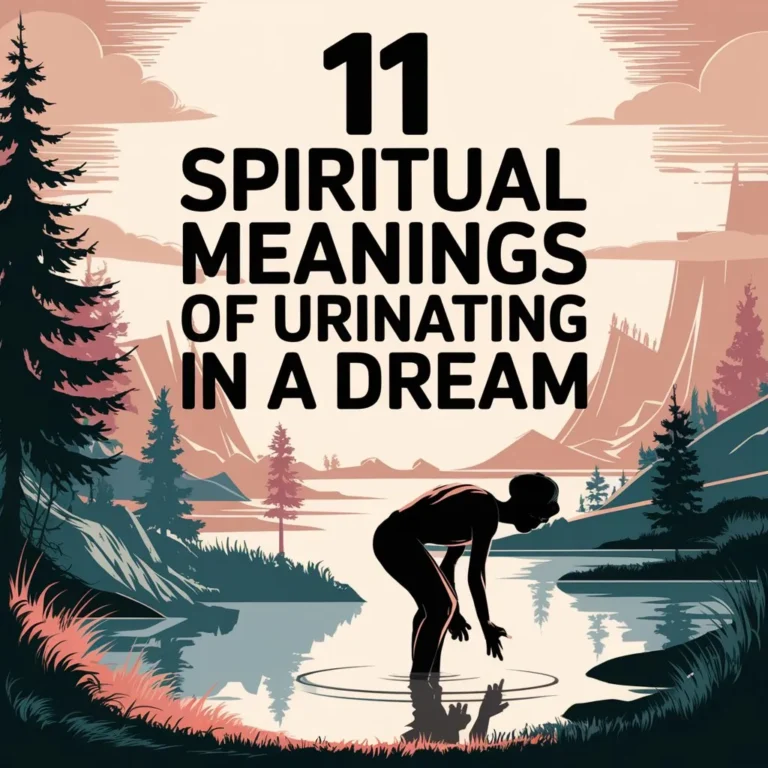Biblical Meanings of the Lyrid Meteor Shower 2025
Get ready for something amazing in the sky. The Lyrid meteor shower is coming in 2025, and it promises to light up the night with shooting stars.
This event peaks on April 22, and people all over the world will look up in wonder. But here’s the big question: does this meteor shower mean more than just a pretty show? Could it carry a message from the Bible?
In this blog post, we dive into the Lyrid meteor shower and explore its possible spiritual meanings. We mix science with faith to give you a fun and easy read.

Key Takeaways
Here’s a quick list of what you’ll find in this post. These points sum up the exciting stuff about the Lyrid meteor shower in 2025 and its biblical ties.
- The Lyrid meteor shower happens every year in April. In 2025, it peaks on April 22, giving you a chance to see bright meteors and maybe even fireballs.
- It’s one of the oldest meteor showers we know about. People have watched it for over 2,700 years, starting with records from ancient China.
- The Bible talks about stars falling from the sky. Some think these verses, like in Revelation, point to meteor showers as signs from God.
- Some believers see the 2025 Lyrids as special. They wonder if it ties to prophecies about the end times or God’s messages.
- Science explains how it works. The shower comes from dust left by a comet called Thatcher, burning up in our atmosphere.
- You can watch it best in the dark. Find a spot away from city lights, look up after midnight, and enjoy the show.
- Faith and science mix here. This post shows how the Lyrids can be both a cool event and a moment to think about bigger things.
This list gives you a taste of what’s ahead. Now, let’s jump into the details!
What Is the Lyrid Meteor Shower?
The Lyrid meteor shower is a yearly event that lights up the sky. It happens when Earth moves through dust left by a comet named C/1861 G1 Thatcher. This comet swings by every 415 years or so, but its trail sticks around.
In 2025, the shower runs from April 16 to April 25. The best night to watch is April 21 to 22, when it peaks. On that night, you might see 10 to 20 meteors per hour. Sometimes, it surprises us with up to 100 meteors per hour!
These meteors zip through the air at 29 miles per second. That speed makes them glow bright as they burn up. Some even turn into fireballs, which are bigger and super shiny.
The meteors seem to come from the constellation Lyra, a small group of stars you can spot in the sky. That’s why we call it the Lyrid meteor shower. It’s a simple name for a stunning show!
The History of the Lyrid Meteor Shower
This meteor shower has a long story. People first wrote about it in 687 BCE in China. They said the stars fell like rain, which sounds so cool!
That makes the Lyrids one of the oldest meteor showers we’ve tracked, over 2,700 years old. Back then, folks didn’t know about comets, but they loved watching the sky.
The Greeks and Romans saw it too. They left notes about bright lights streaking across the night. Fast forward to 1861, and a guy named A.E. Thatcher found the comet behind it all.
Since then, we’ve kept an eye on the Lyrids every April. One big year was 1982, when people in the U.S. saw tons of meteors, up to 90 per hour. The Lyrids have history, and they keep making new memories for us today.
How Does Science Explain Meteor Showers?
Science gives us a clear picture of meteor showers. They start with comets, like Thatcher for the Lyrids.
Comets are big balls of ice and dust that orbit the sun. As they move, they leave bits behind. When Earth crosses that dusty path, the bits hit our atmosphere.
These tiny pieces, often smaller than a grain of sand, zoom in fast. The air gets hot from the speed, and the dust burns up. That’s what makes the light we see.
The Lyrids move at 29 miles per second, which is why they shine so bright. Bigger chunks can make fireballs, those extra flashy meteors. It’s all about Earth running into comet leftovers, and science shows us how it works step by step.
Stars in the Bible: What Do They Mean?
The Bible loves talking about stars. They show up a lot, and they mean big things. In Genesis 1:16, God makes the stars to light the night and mark time.
They’re part of His creation, showing His power. Then there’s the Star of Bethlehem in Matthew 2. It leads the wise men to baby Jesus, a sign of something huge happening.
Stars also stand for people sometimes. In Daniel 12:3, it says the wise will shine like stars forever. That’s a pretty picture! But falling stars are different.
They pop up in places like Revelation, hinting at warnings or changes. The Bible uses stars to point to God’s plans, and that’s why some look at the Lyrids and wonder what they mean.
Falling Stars in Scripture
The Bible has some wild lines about stars falling. Take Revelation 6:13. It says, “And the stars of heaven fell unto the earth, even as a fig tree casteth her untimely figs, when she is shaken of a mighty wind.” That sounds like a meteor shower, right? People read that and think of bright streaks in the sky.
Then there’s Matthew 24:29. Jesus says, “The stars shall fall from heaven, and the powers of the heavens shall be shaken.”
It’s about big events coming. Some folks connect these verses to showers like the Lyrids. They see them as signs God might send. Not everyone agrees, but it’s a fun idea to chew on when you watch the sky light up.
Could the Lyrid Meteor Shower Be a Sign?
So, does the Lyrid meteor shower in 2025 mean something biblical? Some say yes! They look at those falling star verses and think, “Maybe this is a hint.” The shower’s peak on April 22, 2025, has some folks buzzing. They wonder if it ties to God’s messages or even the end times.
No verse says “Lyrids” by name, of course. But the idea of stars falling gets people talking. Some Christians online chat about it, saying it’s a nudge to pray or think about life. Others just enjoy the show without digging deeper. It’s up to you what you see in those shooting stars!
Prophecy and the Sky
Prophecy in the Bible often uses the sky to tell stories. Prophets like John in Revelation saw visions of stars and heavens shaking.
These were signs of God doing big things. Meteor showers fit that vibe for some people. They think the Lyrids could be a little echo of those prophecies.
Take Revelation 8:10. It talks about a great star falling and changing the earth. Could that be a meteor? Maybe! The Lyrids aren’t that dramatic, but they still spark wonder.
Prophecy isn’t clear-cut, so folks guess and talk. The 2025 shower might just be a cool night, or maybe it’s a whisper of something more.
Past Meteor Showers and Faith
History gives us fun examples of meteors and belief mixing. The Leonid shower in 1833 was a monster.
People saw thousands of meteors, and some freaked out. They called it “the night the stars fell” and linked it to Bible verses. Preachers said it was a sign of the end!
The Lyrids haven’t had a moment that big, but they’ve been around forever. Ancient people saw them and wrote them down. Maybe they felt God was speaking too. In 2025, we might not panic like in 1833, but the past shows how skies and faith connect for lots of people.
The Lyrids and the End Times
Some tie meteor showers to the end times. Revelation is full of wild scenes, like stars falling and the sky rolling up.
The Lyrid meteor shower in 2025 has some asking, “Is this part of it?” They read verses and watch the sky, looking for clues.
But here’s the thing: no one knows for sure. The Lyrids are a regular event, not a one-off disaster. Still, their beauty makes people think about big questions. Are they a sign of Jesus coming back? Most say it’s just a neat show, but the idea keeps the conversation going.
How to Watch the Lyrid Meteor Shower in 2025
Want to see the Lyrids? It’s easy! The peak is April 21 to 22, 2025. Go out after midnight, when the sky’s dark and Lyra is high up. Find a spot far from city lights. Parks or fields work great.
Bring a blanket or chair and lie back. Let your eyes get used to the dark for 20 minutes. Don’t stare at your phone! Look toward Lyra, but scan all over. You might catch 10 to 20 meteors per hour, maybe more if luck’s on your side. It’s a free show, so grab some friends and enjoy!
Praying Under the Stars
For some, the Lyrids are a time to connect with God. You can sit under the sky and pray while meteors flash. It’s peaceful and feels special. Some folks read Bible verses about stars and think about their faith.
Others just sit quietly, watching and feeling small in a big universe. You could try it in 2025. Take a moment during the peak to say a prayer or think about life. The Lyrids give you a perfect excuse to look up and wonder about God and everything else.
Science Meets Faith
The Lyrids let science and faith hang out together. Science says it’s comet dust burning up. Faith says it might mean more. Both are true for lots of people! You can love the facts and still feel a spiritual vibe.
The 2025 shower is a great example. Astronomers predict the peak, and believers ponder its meaning. It’s like a bridge between two ways of seeing the world. You don’t have to pick a side—just enjoy the view and let your mind wander.
Why the Lyrids Matter
Why care about the Lyrids? They’re more than just lights. They’ve been around forever, linking us to ancient watchers. They make us ask questions about God, the universe, and our place in it. That’s pretty cool for a bunch of dusty streaks!
In 2025, they’ll shine again. You can watch and decide what they mean to you. Maybe they’re a science lesson, a faith boost, or just a fun night. Whatever you pick, the Lyrids remind us the sky’s full of stories waiting to be told.
Wrapping It Up
The Lyrid meteor shower in 2025 is almost here, and it’s going to be awesome. Peaking on April 22, it’s a chance to see nature’s fireworks and maybe think about bigger things. The Bible’s star talk adds a fun twist—could this be a sign? No one’s sure, but that’s part of the adventure.
Grab a blanket, head outside, and look up. Enjoy the science of comet dust and the wonder of faith. The Lyrids are for everyone, whether you’re a stargazer or a dreamer. What will you see in those falling stars? Let’s find out together in 2025!
FAQs
When Should I Watch the Lyrid Meteor Shower in 2025?
The best time is the night of April 21 to 22, 2025. Go out after midnight until dawn. That’s when you’ll see the most meteors.
How Many Meteors Will I See?
You might spot 10 to 20 meteors per hour at the peak. Sometimes, it jumps to 100 if the shower gets extra busy.
Does the Bible Mention the Lyrid Meteor Shower?
No, not by name. But it talks about falling stars, like in Revelation. Some think that fits meteor showers like the Lyrids.
Can People in the Southern Hemisphere See It?
Yes, but it’s trickier. The Northern Hemisphere gets a better view because Lyra is higher up there.
What’s the Best Way to Watch?
Find a dark spot away from lights. Lie back, skip the phone, and let your eyes adjust. Look all over the sky, not just at Lyra.

Naomi White is an esteemed expert in spirituality with a passion for uncovering the hidden meanings and messages within divine symbols. Naomi’s work aims to bridge the gap between the mystical and the everyday, helping others find guidance and inspiration in the symbols that surround us all.















